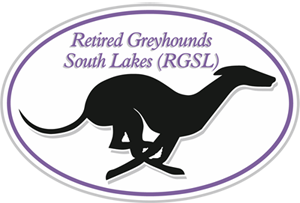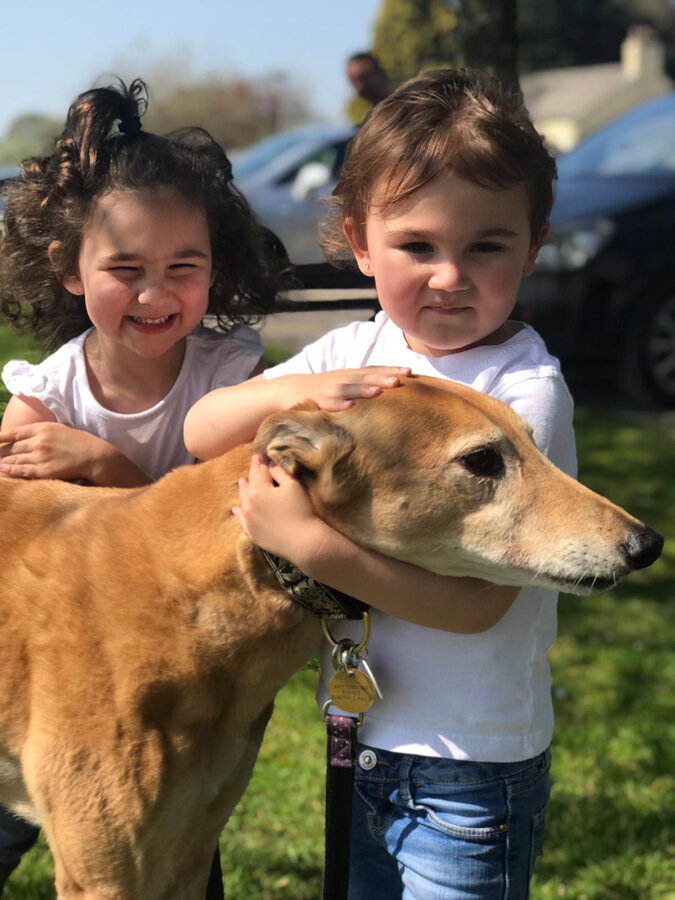Greyhounds and Children
Teaching children to respect
Greyhounds generally get on extremely well with children because of their temperament but as with everything they need time to themselves so children, no matter how young they are should be taught that when the dog is in his bed he should be left alone. If you allow your dog to lay on the settee then that also becomes his bed and when on there should also be left alone. There's a lot in the old saying - 'Let sleeping dogs lie'. Children should be taught never to tease the dog, poke him, pull his hair, his tail or his ears, nor should they hit him with their toys, open cupboard doors into them, throw toys at them nor jump on them whether the dog is standing up or lying down because all these may well initiate a natural defensive reaction in the dog.
This reaction could be construed as an aggressive act especially if you never saw the circumstances leading up to the dog responding the way it did. Think of how you would react if someone suddenly jumped on you when you were asleep or walked up to you and slapped you in the face for no reason. You would respond in a way that was instinctive to your natural defenses and a dog will do exactly the same. Always teach children to stroke a dog, never pat it because the dog may interpret the pat as a smack. If your greyhound is living with children it's best they have at least two beds, one upstairs and one downstairs. If the children are playing and being noisy downstairs and the Greyhound wants some peace then he can go upstairs and visa versa.
Approaching a dog
If a dog has been hit at any time in his life he may relate the palm of a hand with pain. Many dogs associate the palm of a hand as being an aggressive gesture, whereas the back of a hand is regarded as being a non-aggressive gesture.
Children should be taught to approach dogs in the correct manner to avoid them growing up to be afraid of dogs.
When children approach dogs they want to stroke their natural reaction is to stroke the top of the dog’s head straight away using the palm of their hand. This inevitably causes the dog to lift its nose up towards their hand because smell is the most important thing to a dog, so important that it operates 60% of their brain. All the dog wants to do is smell the hand but his action is often interpreted as him wanting to bite so the child becomes frightened and pulls their hand away sharply. If the child raises their hands above their head the dog will try to jump up to smell the hands, so always remember to keep hands down by your side so the dog can smell them without any bother.
When you approach a dog you want to stroke remember a few simple rules:
1. The dog must smell you before he does anything else because to a dog your smell tells him everything about you, and he needs to know this so he knows how to respond to you.
2. For the first 10 seconds or so don’t touch the dog, don’t talk to him and don’t look him in the eyes. Act normal and talk to the person with the dog, which allows the dog time to assess you without him feeling threatened or afraid.
3. Make your hand limp and present the dog with the back of your hand so he can smell it. After a few seconds once he’s had time to smell you, you can slide your hand onto the side of his face to stroke him and after a short while slide your hand upwards until you reach the top of his head and then you can stroke him in the normal manner. In doing this you give him time to do what his instinct tells him to do, which is to smell you in order to assess if you are okay.

